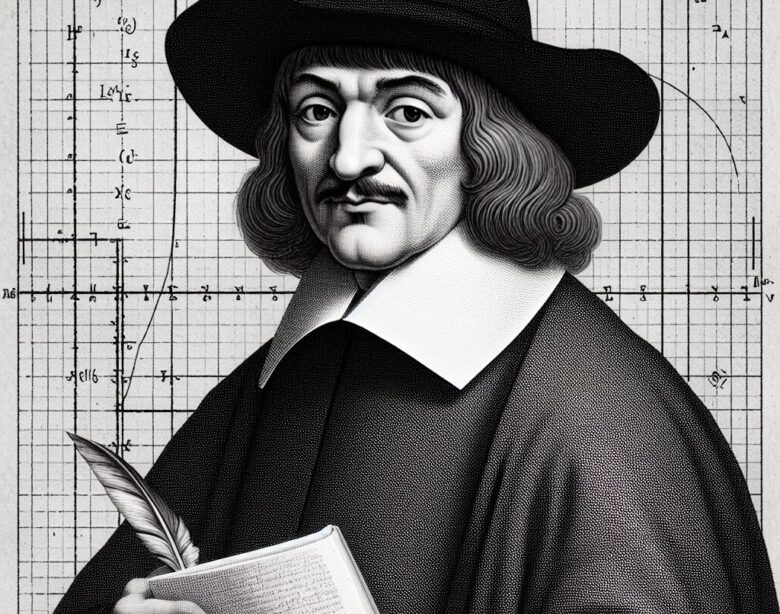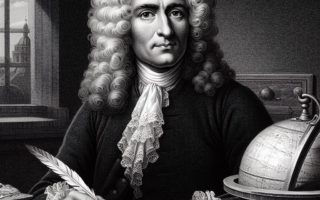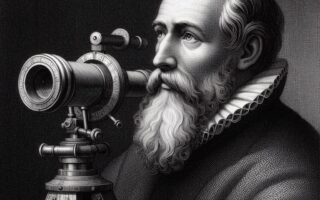In the annals of intellectual history, few figures are as influential—or as multifaceted—as René Descartes. Known widely as the father of modern philosophy, Descartes was also a brilliant mathematician and scientist whose contributions laid the groundwork for many branches of modern mathematics. His revolutionary idea of linking algebra with geometry created the field we now call analytic geometry, and his method of deductive reasoning influenced scientific thought for centuries.
Born at a time when science and philosophy were undergoing seismic shifts, Descartes stood at the crossroads of medieval scholasticism and the modern scientific era. His ideas challenged the prevailing authority of Aristotelian logic and Ptolemaic cosmology, replacing them with a new framework rooted in reason, doubt, and mathematical clarity.
Early Life and Education
René Descartes was born on March 31, 1596, in La Haye en Touraine, France (now called Descartes, in his honor). Raised in a moderately affluent family, he was educated at the Jesuit college of La Flèche, one of the finest schools in Europe at the time. There, he studied classical subjects including mathematics, philosophy, and the Scholastic method of logical reasoning.
After earning a law degree from the University of Poitiers in 1616, Descartes opted not to practice law. Instead, he joined the army briefly and spent much of his life traveling across Europe, engaging in scientific, mathematical, and philosophical studies.
The Mathematical Revolution: Cartesian Geometry
The most transformative mathematical contribution from Descartes came in 1637, with the publication of his philosophical treatise Discourse on the Method, which included an appendix titled La Géométrie.
This appendix would change the landscape of mathematics forever.
The Birth of Analytic Geometry
Before Descartes, geometry and algebra were largely separate disciplines. Euclidean geometry was based on postulates and constructions, while algebra dealt with symbolic manipulations. Descartes unified these two realms by introducing coordinate geometry, a method that allows geometric shapes to be expressed algebraically and vice versa.
He accomplished this by using a coordinate plane—what we now call the Cartesian plane—where points are located using pairs of numbers (x, y). Using this system, geometric problems could be converted into algebraic equations, and equations could be visualized as geometric curves.
This brilliant innovation allowed:
- Lines and curves to be described with equations.
- Problems in geometry to be solved algebraically.
- A systematic approach to analyzing conic sections (parabolas, ellipses, hyperbolas).
Today, this connection is fundamental to calculus, linear algebra, differential equations, computer graphics, machine learning, and more.
Algebraic Innovation and Mathematical Notation
Descartes also refined algebraic notation, making it more intuitive and standardized:
- He used the last letters of the alphabet (x, y, z) for unknowns, a practice still followed today.
- He used the first letters (a, b, c) to represent known constants.
- He introduced the superscript notation for powers: writing \(x^2\) instead of \(xx\).
These innovations were not just cosmetic. They streamlined mathematical communication and made algebra more accessible, setting the stage for future discoveries by Newton, Leibniz, and others.
Philosophy and Method: Foundations for Scientific Thought
In Discourse on the Method, Descartes outlined his famous maxim: “Cogito, ergo sum” (I think, therefore I am). While this statement is often viewed as a philosophical landmark, it was also deeply tied to Descartes’ scientific method.
His approach was rooted in systematic doubt. Descartes proposed that to understand the truth of anything, one must:
- Doubt all preconceived knowledge.
- Break problems into manageable parts.
- Solve the simplest problems first.
- Systematically build up to more complex conclusions.
This method of rational inquiry became the basis for the scientific method. It replaced blind adherence to authority with evidence-based reasoning and logic. In a time when science was often intertwined with theology and tradition, Descartes’ philosophy was a breath of fresh air that helped catalyze the Scientific Revolution.
Impact on Physics and Mechanics
Although Descartes’ physics was eventually superseded by Newtonian mechanics, he made several significant contributions:
- He proposed a mechanistic universe governed by physical laws rather than divine will.
- He introduced the concept of inertia—an object in motion remains in motion unless acted upon—paving the way for Newton’s first law of motion.
- He theorized about the conservation of motion, though his exact formulations were less accurate than those later developed by Newton and Leibniz.
His insistence that the universe could be understood through mathematical laws helped solidify the idea that mathematics is the language of nature.
The Cartesian Coordinate System: A Legacy That Lives On
Descartes’ introduction of the Cartesian coordinate system did more than solve a few geometry problems—it revolutionized mathematics.
- In calculus, this system allows functions to be graphed, limits to be visualized, and curves to be analyzed.
- In computer science, Cartesian coordinates are used in graphics, simulations, and programming logic.
- In engineering and physics, they are essential for plotting forces, motion, and systems.
- In machine learning and data science, high-dimensional Cartesian spaces are used to represent data and optimize algorithms.
Nearly every mathematical diagram, graph, or plot you’ve ever seen stems from Descartes’ insight.
Controversies and Debates
Like many great thinkers, Descartes faced criticism:
- Some contemporaries criticized his mechanistic views as too deterministic and insufficiently accounting for divine agency.
- His theories on vortex physics, though imaginative, were ultimately incorrect and replaced by Newtonian gravitation.
- His dualism—the idea that mind and body are distinct substances—remains a topic of philosophical debate.
Nevertheless, even his errors were stepping stones that advanced human understanding.
Death and Legacy
René Descartes died in 1650 in Stockholm, Sweden, where he had been invited by Queen Christina to teach philosophy. Though his life was relatively short, his impact was immense.
His legacy includes:
- Founding analytic geometry, the cornerstone of calculus and modern mathematics.
- Introducing notation and methods still used today.
- Advancing the philosophical foundations of scientific reasoning.
- Inspiring a generation of scientists, mathematicians, and philosophers including Newton, Leibniz, and Spinoza.
Conclusion: A Mind for All Seasons
René Descartes was not merely a mathematician or a philosopher—he was a bridge between worlds, a pioneer who helped turn vague ideas into precise formulas and philosophical musings into structured inquiry.
His coordinate system gave us a way to map space mathematically. His philosophy taught us to doubt, question, and seek clarity. His writings laid the intellectual groundwork for modern science.
In every graph you draw, every equation you solve, and every problem you break down into parts—Descartes is there.
In many ways, the Cartesian plane is a metaphor for Descartes himself: a clean, logical grid that maps the chaos of reality into something we can understand.
Please Visit Our Sponsors:
We only support vendors that we use ourselves in our home. The links below are our own links or affiliate links but know that we use all of these now, or have in the past. As the author/creator of this blog, I also tutor mathematics on Wyzant, sell on Etsy, create content on TpT, and learn Korean on Rosetta Stone.





